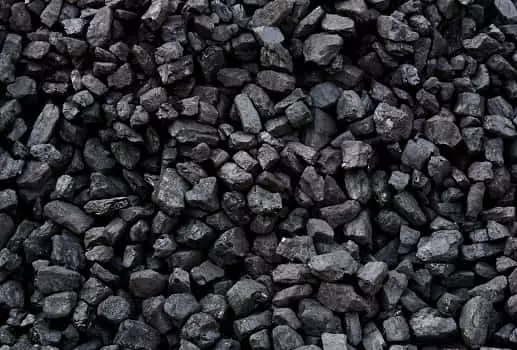The greatest coal-producing countries have supplied a resource to international markets that has fueled industrialization, both directly and indirectly, by means of thermal energy generation and as an element in manufacturing processes as steel making.
Although coal’s prominence has decreased in recent years due to climate concerns as well as efforts to decarbonize the global energy system, it is still the largest source of electricity generation worldwide, accounting for 38% of the total share in 2019. This is as per the International Energy Agency.
Since 2016, annual coal production has increased, and estimates place global coal reserves at well over a trillion metric tonnes.
Global coal production reached 7.9 billion metric tons in 2019, according to the International Energy Agency (IEA), the highest level since 2014.

This represents an increase of 1.5% annually, which is roughly half the rate seen in recent years. Of this total, about 86% was thermal coal & lignite while the rest was metallurgical coal.
As demand drops during the corona pandemic, production around the world is predicted to fall by 6.5% annually in 2020, but to recover to 7.6 MMT in 2021.
Largest Producers Of Coal In The World
1. China

When it comes to coal production, China stands as the largest producer of coal in the world and as a top-notch leader. In 2019, China accounted for about 47% of the world’s total output. During the year, it mined nearly 3.7 billion tonnes, an increase of 4% from the previous year.
In addition, the country consumes over 53% of the world’s coal supply.
To lessen its dependency on coal, China is expected to take action in response to President Xi Jinping’s 2020 pledge that the country will aim to be carbon neutral before 2060.
Still, the IEA anticipates no change in yearly production levels between 2020 and 2021 as the transition is handled gradually.
2. India

In 2019, India will produce about 783 million tonnes of coal, or little under 10% of the world’s total. India’s coal production in 2022 was 893.19 million tonnes (MT), according to the Ministry of Coal.
About 80% of the country’s output comes from the state-owned Coal, the largest coal-mining business in the world, which operates more than 360 mines.
The Indian government has committed to allowing private companies to develop the country’s coal deposits by 2020. This is part of an effort to increase domestic output and cut back on imports.
Early interest is estimated to be minimal for the auctioning off of around 40 coal mines for development, which reflects a lack of enthusiasm among financiers at a time where coal is growing out of favor while competition from renewable is expanding.
3. Indonesia

With a total of 562.5 million tonnes, Indonesia is the fifth-highest producing country in the world. Australians and Indonesians have been competing head-to-head in the coal export market, and while Indonesia surpassed Australia in coal power, the roles have since been reversed. It is the world leader in coal exports.
Forty-four percent of Indonesia’s electrical output is attributed to coal. According to data from 2012, the country has roughly 5.5 billion tonnes of coal reserves.
4. United States

The United States has been seeing a steady fall in coal production that reached a new low in 2020 of 484.7 million metric tonnes, the lowest amount since the 1970s.
Despite President Trump’s campaign promises to revitalize the industry, need for the fossil energy from the local power sector has decreased due to competition from natural gas or increasingly affordable renewable, & this trend is anticipated to intensify in the future years.
The International Energy Agency predicts that production would drop to 491 million tonnes in 2020, a year-on-year decrease of 23%, before recovering somewhat to 539 million metric tonnes in the year 2021.
5. Australia

Australia produced 476.7 million tonnes of coal in 2020, making it the world’s fifth-largest coal producer. In 2018, the country exported 382 million tonnes of coal, making it the second-largest exporter in the world behind Indonesia. Australia has 147.4 billion tonnes stored away in case of need. Open-pit mining accounts up 74% of Australia’s overall coal production, and roughly 100 independent coal miners are responsible for this.
6. Russia

In recent year, Russia will extract 430 million tonnes of coal, bringing its worldwide share to slightly over 5%. This places it sixth on the list of top coal-producing countries.
The International Energy Agency predicts an 8% drop in Russian coal production in 2020 as lower demand over the year hits the country and major export markets like Europe and Korea.
Approximately 162 billion tonnes coal are expected to be located throughout the country, with much of that found in basins in Siberia.
Politicians have stated their intention to increase domestic coal output in the years ahead, with a goal of producing 670 million tonnes year by 2035.
7. South Africa

South Africa is the world’s seventh-largest coal producer, with annual output of around 252 million tonnes. Approximately 69 million tonnes of coal were traded in 2018, making the country the sixth-largest exporter in the world. Many tonnes of coal are shipped from South Africa to Asia and Europe every year.
Over 90% of South Africa’s power comes from coal, according to estimates. In December of 2020, South Africa’s proven coal reserves amounted to roughly 9.89 billion tones and has production of 248.3 million tonnes.
8. Kazakhstan

As of the end of December 2020, Kazakhstan’s total coal production was 113.2 million tonnes, placing it eight on the list. Kazakhstan ranked thirteenth in terms of consumption; the nation’s overall connected power capacity is powered by coal, which accounts for roughly 85 percent of the total.
It is believed that the country has a resource of approximately 25.6 billion tonnes of coal, making it the ninth largest coal reserve in the world. There are around 400 coal mines in Kazakhstan.
9. Germany

Although it has shut down the last of its hard coal mine in 2018, Germany is remains the world’s largest producer of brown coal. Germany intends to eventually stop using coal for electricity generation. However, 35.3% of Germany’s power comes from coal. Still, it ranks 6th globally in reserves and 4th globally in consumption.
10. Poland

Poland ranks tenth in the world not only in terms of production but also in regards of coal reserve of 26.5 billion. Poland ranks tenth in regards to the consumption and ranks ninth in terms of production of coal. It no longer engages in exporting coal because it uses practically all of what it mined internally.
At the moment, coal is responsible for providing Poland with approximately 80 percent of its electricity generation. It plans to cut that number in half by the year 2040, with gas-fired electricity serving as back-up while renewable and nuclear energy sources provide the majority of the remainder.
Final thoughts
Coal is proving to be an essential component in the expansion of the world’s energy market. The demand for coal is always growing, and a greater proportion of the electricity that is generated around the world is coming to be dependent on power plants which produce use of the resource. In spite of the large number of coal reserves that are scattered all over the planet, it appears that these quantities are not sufficient.
Moreover, the ecological damages that occur as a consequence of activities associated to coal operations are serious matters, and as a result, appropriate efforts need to be made in order to address the situation.
As a result, it is vital for governments to identify innovative technologies for enhanced mining & coal processing, also while taking into account the importance of efficiency and the fact that environmental sustainability is essential.
It is imperative that authorities devise long-lasting technical solutions that aim into the future. This will place the coal industry on a course that will enable it to adapt more effectively to upcoming global issues.
Coal Production FAQs
Q. How is coal mined?
Ans: Coal mining methods can vary, but the two primary methods are underground mining and surface mining. Underground mining involves digging tunnels and shafts to access coal seams deep underground, while surface mining involves removing layers of overlying rock and soil to access coal seams closer to the surface.
Q. What are the different types of coal?
Ans: There are several types of coal, with the main ones being lignite, sub-bituminous, bituminous, and anthracite. These types differ in their carbon content and energy density, with anthracite being the highest quality and most energy-dense.
Q. What is the environmental impact of coal production?
Ans: Coal production and consumption have significant environmental impacts, including air and water pollution, greenhouse gas emissions, habitat disruption, and health risks to miners. The burning of coal for electricity generation is a major contributor to global carbon emissions and climate change.
Q. Is coal production declining?
Ans: In many parts of the world, coal production has been on the decline due to a shift toward cleaner and more sustainable energy sources, such as natural gas, renewable energy, and energy efficiency measures. Environmental concerns and the transition to cleaner energy sources have contributed to this trend.
Q. What are the alternatives to coal for energy production?
Ans: Alternatives to coal for energy production include natural gas, nuclear power, and renewable energy sources like wind, solar, and hydropower. These alternatives are often considered more environmentally friendly and sustainable.
Q. Are there efforts to make coal production more sustainable?
Ans: Yes, there are ongoing efforts to make coal production more sustainable, such as implementing cleaner mining and processing technologies, carbon capture and storage (CCS) to reduce emissions, and repurposing coal mines for other uses like energy storage or renewable energy installations.
Q. What are the economic impacts of coal production?
Ans: Coal production can have economic benefits for regions and communities where it is a major industry, creating jobs and contributing to local economies. However, the long-term economic sustainability of coal-dependent regions can be challenged as the industry evolves and faces competition from cleaner energy sources.
Q. Is there a future for coal production?
Ans: The future of coal production is uncertain and varies by region. While coal remains a significant energy source in some areas, the global trend is moving toward cleaner energy alternatives. The future of coal production may depend on technological advancements, policy decisions, and the transition to more sustainable energy sources.














